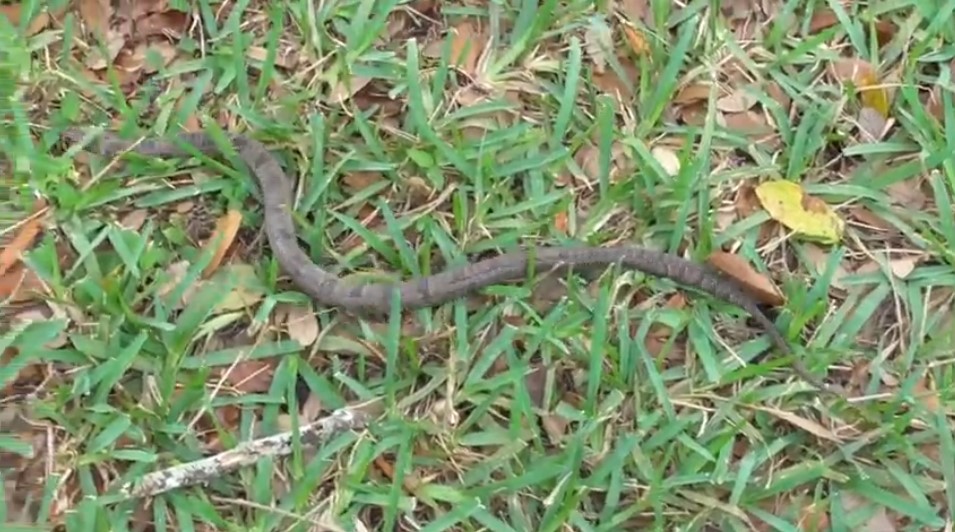
One of the major features about the Brown Water Snake (Nerodia Taxispilota) is that it is a mainly aquatic snake, and it will be very rarely seen away from the waterways and swamps where it is most comfortable. This dark colored snake is often mistaken for the Cottonmouth, which is one of the United States' most venomous snakes, and for this reason many people will kill the snake without actually ensuring that it is a dangerous species. Although the snake is generally aquatic, it has been known to climb trees around the edges of the water where its habitat is, and this can sometimes lead to contact with people.
Appearance And Diet
The Brown Water Snake is, as its name suggests, generally brown in color although this can also stray to a dark green, and the body is usually covered in dark or black blotches. When they are fully grown these snakes will usually be between two and a half and five feet in length, and this particular snake is quite heavy bodied meaning that it can be found at the bottom of the pools and on the river bed. The neck and head is distinctly narrower than the rest of the body, which distinguishes it from many other snakes including the venomous Cottonmouth.
Because of the nature of the Brown Water Snake and its excellent swimming ability, one of the main types of prey that it hunts is fish, although it can also eat lizards and any other small animals that can be found around the water's edge. It is dependence on the water for its prey that means the Brown Water Snake will rarely be sighted. When it is hunting it will usually actively swim around looking for fish towards the bottom of lakes and rivers, and small catfish is the most common prey.
Behavior And Habitat
Although the Brown Water Snake is generally aquatic, it will often be found on rocks near the water's edge or even climbing in trees near the water, where it will bask in sunshine. Their habit for basking in trees will often be the most common cause for contact with humans, as they will often dive from the tree into the water when they hear an approaching boat, and if the snake isn't quick enough then it can often dive into the boat itself, where it will feel cornered. Although they are not generally aggressive and will avoid contact with people if possible, the Brown Water Snake can often deliver a particularly nasty bite if cornered, although it is not venomous.
The Brown Water Snake can be found in and around many bodies of water, mainly those that have moving water such as rivers, creeks and streams. They are mainly to be found in the south eastern states, especially Florida, Georgia and South Carolina.
Reproduction and Growth Cycle
The mating season for Brown Water Snakes is in the spring, and although they are generally aquatic all mating will take place on the banks or even in the trees around a particular body of water. These snakes give birth to live young, and will usually give birth to broods from around fifteen snakes up to sixty in some cases.
These juveniles will usually be between seven and eleven inches in length, and will be able to start feeding almost immediately. They will grow gradually for the first two or three years until they reach adulthood, at which point their speed of growth will slow significantly, although they will continually be growing throughout their life. Although it is difficult to place an exact lifespan on the Brown Water Snake, in captivity its lifespan can be up to ten years.
Go back to the pestcontrolsnake.com home page.
Copyright 2021 - pestcontrolsnake.com
Nationwide Snake Control